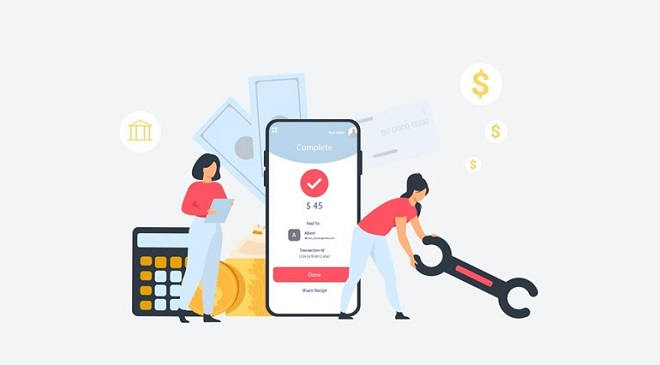Once you’ve planned to create a finance app, be ready to wait. As a rule, such apps’ creation takes three to nine months, depending on your product’s type and the number of features.
Naturally, a project of such length and complexity can quickly turn into chaos if you don’t plan all steps and deliverables concisely. So, apps require careful planning, with all time-consuming stages broken down into manageable tasks with clear timelines.
Unsure where to start and how to go on? Which steps to cover? Here is a clear roadmap of finance application development for startups, giving you a detailed step-by-step plan for your next software project.
#1 Research and Briefing
When initiating a software project, the first document you need to create is its brief. It clarifies what you want from the project and its creator, thus simplifying the development agency’s search. At a minimum, the brief should cover the following:
- The anticipated project aims
- Success metrics you will apply to evaluate it
- An NDA
- The budget you’re ready to allocate (include a range to give the candidates some latitude)
- Delivery dates (a range is also preferable)
You can also include the request for proposal in a format that your company typically uses. Include some open-ended sections into it to give your candidate firms the freedom to suggest alternative solutions.
Once the brief is ready, and you have contacted the candidate firms, you should be ready to sign a contract with the winning candidate. After that, the firm starts market research to test your business idea. This process is not quick, as researchers seek to identify the market trends and user personas, creating an MVP to check the idea’s marketability.
#2 Design Sprint Planning
The next step of project development is the design of sprints for all ideas’ validation. A credible, dynamic software development firm always includes sprints in the design roadmap, as they are needed to test specific app aspects. One sprint is usually planned for one week, and its outcome is a tested basic design of an app feature, validated and confirmed for further development.
Experts recommend taking sprints seriously. Without them, your resulting app may reveal critical design inconsistencies or flaws that will take much time and money to correct. Sprints, in their turn, make the design process flexible and incremental, ensuring that user feedback is regularly incorporated into the design. This approach thus guides the design process in the right direction and eliminates the risks of costly mistakes.
#3 Rapid Prototyping
The best approach you can use now is rapid prototyping. It adds efficiency to the development and change processes by intruding iterations in the design pipeline. It works in tandem with sprints, guaranteeing that the next increment of the app’s design fits the user feedback, the client’s requirements, and changes negotiated in the previous sprint.
When using rapid prototyping, the developers can test design ideas with real users and change the design direction without severe effects on the development time and costs. Improvements in the software are made on the go without compromising the deadlines and code quality.
#4 QA Testing
Once the software is ready, it’s time to subject it to rigorous QA testing and security audit. This stage is vital for the app’s success in the market, as users rarely adopt flawed apps with numerous bugs in daily use. Besides, downloading a faulty app to one’s smartphone may become a severe security threat, so users are extra cautious about the quality of the software they choose today.
Ensure that your development team allocates enough time for QA testing before the launch, as this stage should be completed without fuss. Every piece of code should be tested, and load tests should be done to confirm the app’s readiness for the launch. A well-trained developer with a keen eye for detail should do the testing, guaranteeing that your app is bug-free upon launch.
#5 App’s Release to App Stores
Don’t forget to reserve around two weeks for the app’s release to the app stores, like Google Play Store or iOS’s App Store. The release may seem to take 1-2 days, but the reality is totally different. You first need to submit your app for the provider’s review, indicating all its business and technical information. The review takes some time, and after it, you will either be asked to introduce improvements or be accepted for app deployment.
#6 Updates and Support
Overall, the time and number of resources allocated to post-launch updates and maintenance are very hard to predict. As a rule, these services are calculated after the app’s completion and launch and come in the subscription form (e.g., maintenance costs per month). You and the development team already understand the set of features, the app’s infrastructure, and the update needs of your users. The provider should monitor the app’s performance, respond to user inquiries, fix bugs in real-time, and work on regular updates.
Plan the Process in Advance
As you might see now, the app development process is complex and sophisticated, with numerous issues surfacing in the process and threatening your deadlines. The good news is that you can minimize the damage and risks with careful planning and negotiation with your software provider. Don’t be afraid to ask questions; choose the software developer ready to negotiate clear deliverables and set transparent estimates. Only with a well-written roadmap communicated to all team members can your app see the world on time, launched without user risks and critical bugs.

